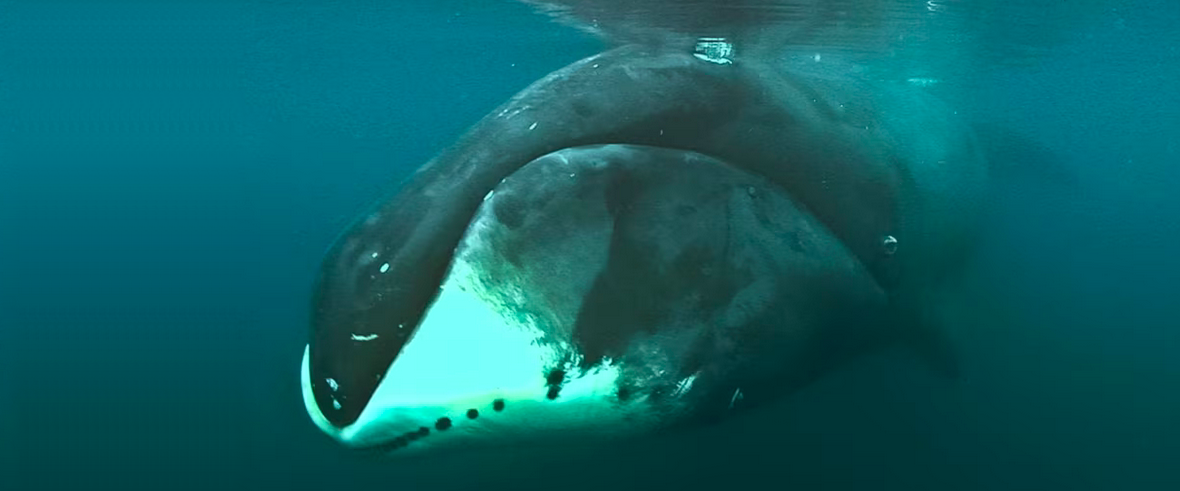
The bowhead whale, aka bowhead, Arctic whale, black right whale, Greenland right whale, steeple-top, polar whale, or Russian whale, can be found in the Arctic and subarctic oceans. There they spend their entire lives, unlike other whales that migrate to warmer waters to birth their young. With a population of an estimated 10,000+ individuals, these whales are listed as Least Concern throughout their range.
First the Stats…
Scientific name: Balaena mysticetus
Weight: Up to 120,000 lbs.
Length: Up to 60 feet
Lifespan: Up to 200+ years
Now on to the Facts!
1.) They get their name from their large, triangular skull. This is used to break through ice sheets.
2.) These whales face the threats of pollution, climate change, overfishing, and habitat destruction.
3.) Measuring up to 19.5 inches, the bowhead’s blubber is the thickest of any known animal’s.
4.) Bowheads lack a dorsal fin.
5.) The bowhead is the only known baleen whale to spend their entire life in the Arctic and sub-arctic seas.
But wait, there’s more on the bowhead whale!
6.) A group of whales is called a gam, herd, mod, pod, or school.
7.) Their pods typically contain around 6 members.
Did you know…?
These whales can submerge for up to 40 minutes at a time.
8.) They engage in spy-hopping, breaching, and tail slapping behaviors.
9.) Bowheads are also very vocal. They utilize a variety of sounds to communicate while feeding and socializing.
10.) Feeding mostly on zooplankton, they will also consume euphausiids and copepods.
But wait, there’s still more on the bowhead whale!
11.) These whales are polyandrous (1 female having a relationship with 1 or more males).
12.) Females undergo up to a 14 month gestation (pregnancy) that yields a single calf.
Did you know…?
Bowheads have the largest mouth of any known creature, measuring up to 16 feet long, 8 feet wide, and 12 feet high!
13.) Calves measure up to 14 feet long and weigh in at around 2,000 lbs!
14.) At around 20 years of age, they become reproductively mature.
15.) The bowhead is the 2nd largest animal on earth, next to the blue whale.
But wait, there’s still a little more on the bowhead whale!
16.) Inuits have described bowheads breaking through up to 2 feet of ice!
17.) Their baleen can measure up to 10 feet.
Now a Short Bowhead Whale Video!
Be sure to share & comment below! Also, check out the Critter Science YouTube channel. Videos added regularly!
Want to suggest a critter for me to write about? Let me know here.



